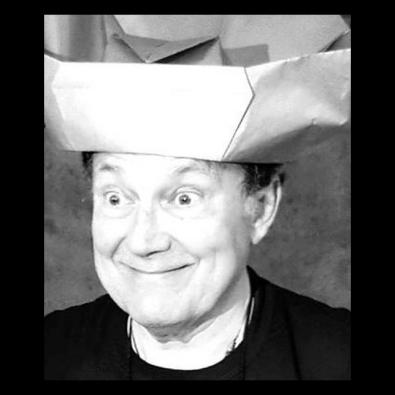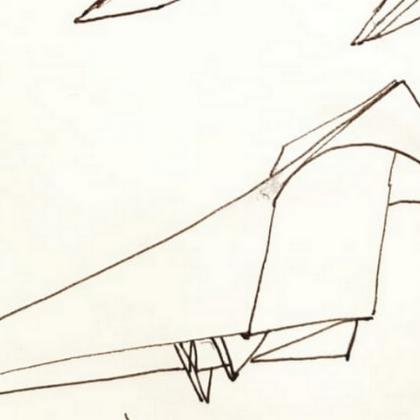Creator

Polo Madueño
For permission to teach the model, please contact the copyright holder.
9000 Comodoro Rivadavia
Chubut
Argentina
About Polo
Leandro Carlos Madueño (Polo Madueño)
October 31, 1946 – March 5, 2019
His favorite phrase: “It seems difficult, but it is not easy.”
Your self-definition: “About myself, I can say that I am an old folder. That I started when I was five years old when the foldings were known as PAPYROLAS or PAJARITAS, and that discipline was called PAPYROFLEXIA.”
Although Polo is not well known worldwide, I believe that due to his importance in the dissemination of origami in Argentina and his participation in the creation of the Argentine Origami Association, he deserves a prominent place among origami masters.
“Polo Madueño” was born on October 31, 1946, in Berisso, province of Buenos Aires. He received his degree in architecture from the National University of La Plata. In 1976 he settled in Comodoro Rivadavia (Chubut), a city that would be his permanent residence.
His passion for origami comes from childhood and was transmitted to him by his father, who in turn learned it from his father. But soon his world expanded with the books of Solórzano Sagredo and some pamphlets by Ligia Montoya.
Your contribution to this activity was very valuable. His particular way of acting and his childlike spirit made his teachings unforgettable. He was one of the founding partners of the Argentine Origami Association (October 25, 2009), today “Plegando al Sur Civil Association”.
His curious spirit took him down many paths: puppets, kites, kitebuggy, and he approached everything with contagious joy. That same joy is what invades us when we remember it in each encounter, between papers and folds.
After his death, the library that bears his and her father´s name (Tata and Polo Madueño) was founded in Comodoro Rivadavia. It contains the entire legacy of books related to origami, that he shared with his father. As part of that legacy, below, I transcribe an article of his that appeared among the library texts.
Although as a creator his production is not very extensive, we published some diagrams that show his style and character, which he transmitted in each of our meetings. His legacy as a creator has not been well known; that is why we are publishing some diagrams that show his style and the character that he conveyed in each of our meetings.
Origami according to Polo
ORIGAMI, PAPIROFLEXIA, PAPER FOLDING… These are words that in different languages mean “folding paper”. But “folding paper” is not enough to define everything that comes behind this art. For example, a packaging machine folds paper but does not make origami, because origami is made by hand. Making a paper ball with your hands is folding paper, but it is not origami either.
To make origami you require a few more things: *a piece of paper, almost always square, and *some geometric rules that you have to follow when folding... Little by little, you fold the paper following a geometric process that, finally, leads you to a certain figure. But the important thing is that later, you can repeat the process to reach
the same figure. When you get there you have folded an origami. But for it to be an ORIGAMI, there is still something missing.
The secret is not in the paper, although sometimes it helps a lot, nor in the figure you arrive at, the secret is in your hands, in your mood, and in your spiritual energy. That is, depending on how these aspects are combined, they will give your work artistic value or not.
As you know, hands are man's first tool. With hands, humanity has built everything. The hands pinch, knot, pull, throw, squeeze, weave, hold, cradle, caress, help, greet, succor, write, draw, paint, sculpt...
Coordinated hands make music, give life to a puppet, make origami... that is, the hands express. Discipline in exercise and skill are a part of the art. The meaning and feeling of their actions is not in the hands, it is in the soul of the one who guides them, and there, in that subtle space, is where art is born and is where the hands of the draftsman, the painter, the sculptor, musician, puppeteer, origamist.
Origami is an art.
October 31, 1946 – March 5, 2019
His favorite phrase: “It seems difficult, but it is not easy.”
Your self-definition: “About myself, I can say that I am an old folder. That I started when I was five years old when the foldings were known as PAPYROLAS or PAJARITAS, and that discipline was called PAPYROFLEXIA.”
Although Polo is not well known worldwide, I believe that due to his importance in the dissemination of origami in Argentina and his participation in the creation of the Argentine Origami Association, he deserves a prominent place among origami masters.
“Polo Madueño” was born on October 31, 1946, in Berisso, province of Buenos Aires. He received his degree in architecture from the National University of La Plata. In 1976 he settled in Comodoro Rivadavia (Chubut), a city that would be his permanent residence.
His passion for origami comes from childhood and was transmitted to him by his father, who in turn learned it from his father. But soon his world expanded with the books of Solórzano Sagredo and some pamphlets by Ligia Montoya.
Your contribution to this activity was very valuable. His particular way of acting and his childlike spirit made his teachings unforgettable. He was one of the founding partners of the Argentine Origami Association (October 25, 2009), today “Plegando al Sur Civil Association”.
His curious spirit took him down many paths: puppets, kites, kitebuggy, and he approached everything with contagious joy. That same joy is what invades us when we remember it in each encounter, between papers and folds.
After his death, the library that bears his and her father´s name (Tata and Polo Madueño) was founded in Comodoro Rivadavia. It contains the entire legacy of books related to origami, that he shared with his father. As part of that legacy, below, I transcribe an article of his that appeared among the library texts.
Although as a creator his production is not very extensive, we published some diagrams that show his style and character, which he transmitted in each of our meetings. His legacy as a creator has not been well known; that is why we are publishing some diagrams that show his style and the character that he conveyed in each of our meetings.
Origami according to Polo
ORIGAMI, PAPIROFLEXIA, PAPER FOLDING… These are words that in different languages mean “folding paper”. But “folding paper” is not enough to define everything that comes behind this art. For example, a packaging machine folds paper but does not make origami, because origami is made by hand. Making a paper ball with your hands is folding paper, but it is not origami either.
To make origami you require a few more things: *a piece of paper, almost always square, and *some geometric rules that you have to follow when folding... Little by little, you fold the paper following a geometric process that, finally, leads you to a certain figure. But the important thing is that later, you can repeat the process to reach
the same figure. When you get there you have folded an origami. But for it to be an ORIGAMI, there is still something missing.
The secret is not in the paper, although sometimes it helps a lot, nor in the figure you arrive at, the secret is in your hands, in your mood, and in your spiritual energy. That is, depending on how these aspects are combined, they will give your work artistic value or not.
As you know, hands are man's first tool. With hands, humanity has built everything. The hands pinch, knot, pull, throw, squeeze, weave, hold, cradle, caress, help, greet, succor, write, draw, paint, sculpt...
Coordinated hands make music, give life to a puppet, make origami... that is, the hands express. Discipline in exercise and skill are a part of the art. The meaning and feeling of their actions is not in the hands, it is in the soul of the one who guides them, and there, in that subtle space, is where art is born and is where the hands of the draftsman, the painter, the sculptor, musician, puppeteer, origamist.
Origami is an art.

